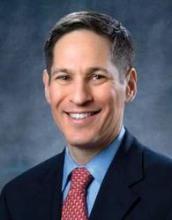New interim guidance that categorizes the risk of people who may have been exposed to Ebola, with recommendations on monitoring and movement restrictions, was announced by the Centers for Disease Control and Prevention Oct. 27.
The document, released the week after enhanced screening of travelers from Liberia, Sierra Leone, and Guinea began at selected U.S. airports, provides guidance to state and local health officials on “managing the movement of individuals being monitored, including travelers from the countries with widespread transmission and others who may have been exposed in the United States,” the statement said.
People traveling from those three countries who have no fever or Ebola symptoms on arrival at airports in six states -- New York, New Jersey, Pennsylvania, Maryland, Virginia, and Georgia -– are subject to active monitoring, where they will be contacted daily for 21 days from the time they left the affected country. Other states will start active monitoring in the following days, according to the statement. If returned travelers develop symptoms, “they can rapidly be assessed and, if they’re found to have Ebola, effectively isolated and treated,” CDC director Dr. Tom Frieden said during a telebriefing announcing the guidance.
The interim guidance outlines four levels of exposure and delineates different public health actions that may be taken for each level. Dr. Frieden acknowledged that it is within the authority of state and local governments to adopt different strategies than those outlined in the guidance.
High-risk: This category includes someone with known exposure to Ebola, such as a needle stick or mucous membrane exposure from the blood or body fluids of a symptomatic patient. For exposed individuals who are asymptomatic, recommendations include direct active monitoring by public health officials, and ensuring, through orders if necessary, no travel on public transportation and no public gatherings. If travel is allowed, it should be by non-commercial conveyances only, coordinated with public health authorities to ensure active monitoring is not interrupted.
“Some risk”: This category would include a person who may have been in the home of someone who was ill with Ebola but who had no direct contact with that person. It also includes health care workers returning from a country where they cared for Ebola patients. Additional precautions, such as daily direct active monitoring, are recommended for this group. The guidance recommends that public health officials “determine on an individualized case-by-case basis whether additional restrictions, such as controlled movement, workplace exclusions, or restrictions on other activities, are appropriate” for this category, the CDC statement said.
“Low but not zero risk”: This group includes people who have traveled in a country affected by the Ebola epidemic but have no known exposure to the virus. It includes health care workers caring for patients with Ebola in the United States. There are “very important differences” from providing care in Africa compared with U.S. hospitals, where the setting is more controlled, Dr. Frieden said. No restrictions on travel, work, or public gathering are recommended for asymptomatic individuals in this group. Direct active monitoring is recommended for U.S.-based health care workers who have cared for symptomatic patients with Ebola, while wearing appropriate protective gear, as well as travelers on an aircraft sitting within 3 feet of a person with Ebola.
“No risk”: This group includes people who have not traveled to an affected country or who have traveled to an affected country more than 21 days previously. Dr. Frieden said that the CDC has received more than 500 inquires from physicians, health departments, and hospitals about patients who were thought to be at risk for Ebola, and in 90% of those cases, the pattern of symptoms or travel history has not been consistent with Ebola.
An average of about 100 people a day enter the United States after having traveled to one of the West African countries affected by Ebola, of which about 5%-6% are returning health care workers, Dr. Frieden said. He emphasized that Ebola is spread only when people are symptomatic and via direct contact with the infected individual or their body fluids. Those caring for Ebola patients are at the greatest risk.


